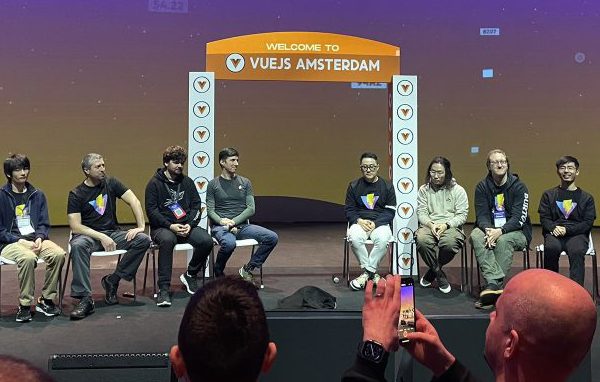Since the inception of Blockchain technology; Bitcoin, Ethereum, or crypto-currencies are hot topics and buzzing around the world many startups based on Blockchain technologies are using cryptocurrencies, in other words, crypto tokens for the utilization of their products. These crypto tokens can be deployed on many Blockchain like Ethereum, Cardano, Binance, Polkadot, etc. It’s another topic of discussion, on which blockchain these crypto tokens need to be implemented but as Ethereum being the first market mover, this blog post explains, how you can create such a token on the Ethereum blockchain.
Before creating an Ethereum based token (ERC20 token), understand first the basics of Smart-contract and their native programming language Solidity.
Smart Contract
A smart contract is simply a set of rules that contains the business logic or a protocol according to which all the transactions on a Blockchain should happen. The general purpose of a Smart contract is to satisfy common contractual conditions like creating its token, perform arbitrary competitions, function to send and receive tokens, and store states of transactions.
Solidity
Solidity is an object-oriented and high-level smart-contract programming language, which is developed on top of Ethereum Virtual Machine (EVM). Solidity compiler converts smart-contract code into EVM bytecode which is sent to the Ethereum network as a deployment transaction. It would be best to have a good understanding of Solidity programming language to efficiently write an Ethereum Smart Contract and build an application on smart-contract.
Coding example of smart-contract
This section contains the example of a smart-contract code written using the Solidity programming language.
Prerequisite
Integrated development environment (IDE)
Remix as the IDE. It is a web-based IDE with built-in static analysis and a testnet EVM. Remix provides the possibility to compile and deploy it to Ethereum testnet with Metamask. Here is a good blog post for it.
There is also another web-based IDE available like EthFiddle. For more information related to IDE please visit here.
Programming Language
Solidity
ERC20 Token Info
- Symbol – N47
- Name – N47Token
- Decimals – 0
- Total Supply – 1000000
Smart-contract Code
// SPDX-License-Identifier: unlicensed
pragma solidity 0.8.4;
// ----------------------------------------------------------------------------
// Safe maths
// ----------------------------------------------------------------------------
contract SafeMath {
function safeAdd(uint a, uint b) public pure returns (uint c) {
c = a + b;
require(c >= a);
}
function safeSub(uint a, uint b) public pure returns (uint c) {
require(b <= a);
c = a - b;
}
}
// ----------------------------------------------------------------------------
// ERC Token Standard #20 Interface
// https://github.com/ethereum/EIPs/blob/master/EIPS/eip-20.md
// ----------------------------------------------------------------------------
abstract contract ERC20Interface {
function totalSupply() virtual public view returns (uint);
function balanceOf(address tokenOwner) virtual public view returns (uint balance);
function allowance(address tokenOwner, address spender) virtual public view returns (uint remaining);
function transfer(address to, uint tokens) virtual public returns (bool success);
function approve(address spender, uint tokens) virtual public returns (bool success);
function transferFrom(address from, address to, uint tokens) virtual public returns (bool success);
event Transfer(address indexed from, address indexed to, uint tokens);
event Approval(address indexed tokenOwner, address indexed spender, uint tokens);
}
// ----------------------------------------------------------------------------
// ERC20 Token, with the addition of symbol, name and decimals
// assisted token transfers
// ----------------------------------------------------------------------------
contract N47Token is ERC20Interface, SafeMath {
string public symbol;
string public name;
uint8 public decimals;
uint public _totalSupply;
mapping(address => uint) balances;
mapping(address => mapping(address => uint)) allowed;
// ------------------------------------------------------------------------
// Constructor
// ------------------------------------------------------------------------
constructor() {
symbol = "N47";
name = "N47Token";
decimals = 0;
_totalSupply = 1000000;
balances[msg.sender] = _totalSupply;
emit Transfer(address(0), msg.sender, _totalSupply);
}
// ------------------------------------------------------------------------
// Total supply
// ------------------------------------------------------------------------
function totalSupply() public override view returns (uint) {
return _totalSupply - balances[address(0)];
}
// ------------------------------------------------------------------------
// Get the token balance for account tokenOwner
// ------------------------------------------------------------------------
function balanceOf(address tokenOwner) public override view returns (uint balance) {
return balances[tokenOwner];
}
// ------------------------------------------------------------------------
// Transfer the balance from token owner's account to receiver account
// - Owner's account must have sufficient balance to transfer
// - 0 value transfers are allowed
// ------------------------------------------------------------------------
function transfer(address receiver, uint tokens) public override returns (bool success) {
balances[msg.sender] = safeSub(balances[msg.sender], tokens);
balances[receiver] = safeAdd(balances[receiver], tokens);
emit Transfer(msg.sender, receiver, tokens);
return true;
}
// ------------------------------------------------------------------------
// Token owner can approve for spender to transferFrom(...) tokens
// from the token owner's account
//
// https://github.com/ethereum/EIPs/blob/master/EIPS/eip-20.md
// recommends that there are no checks for the approval double-spend attack
// as this should be implemented in user interfaces
// ------------------------------------------------------------------------
function approve(address spender, uint tokens) public override returns (bool success) {
allowed[msg.sender][spender] = tokens;
emit Approval(msg.sender, spender, tokens);
return true;
}
// ------------------------------------------------------------------------
// Transfer tokens from sender account to receiver account
//
// The calling account must already have sufficient tokens approve(...)-d
// for spending from sender account and
// - From account must have sufficient balance to transfer
// - Spender must have sufficient allowance to transfer
// - 0 value transfers are allowed
// ------------------------------------------------------------------------
function transferFrom(address sender, address receiver, uint tokens) public override returns (bool success) {
balances[sender] = safeSub(balances[sender], tokens);
allowed[sender][msg.sender] = safeSub(allowed[sender][msg.sender], tokens);
balances[receiver] = safeAdd(balances[receiver], tokens);
emit Transfer(sender, receiver, tokens);
return true;
}
// ------------------------------------------------------------------------
// Returns the amount of tokens approved by the owner that can be
// transferred to the spender's account
// ------------------------------------------------------------------------
function allowance(address tokenOwner, address spender) public override view returns (uint remaining) {
return allowed[tokenOwner][spender];
}
}
Using the above code, smart-contract can be deployed on Ethereum Mainnet or Testnet. Deploying a smart contract is technically a transaction, that needs to pay Gas (fees) in terms of ETH (Native token for Ethereum network), in the same way, that needs to pay gas for a simple ETH transfer. However, Gas costs for contract deployment are far higher.
** To create another token, simply change those values in the smart contract marked as highlight lines.
Summary
Blockchain technology is way deeper than token and smart contracts. There are many technical aspects like Consensus, Blocks, Wallets, Transactions, Decentralization, mining, etc. The goal of this article was just to provide an overview of smart-contract creation. Just feel free to write down your valuable comments.




